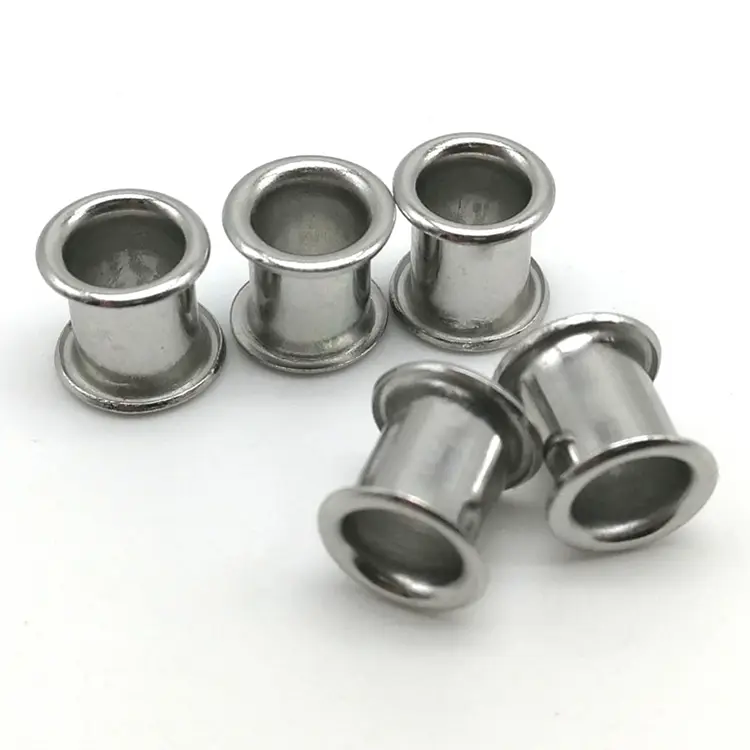The Difference Between Rivets and Eyelet Nails
2025-07-18
At first glance, rivets and eyelet nails may appear similar, but unless you work in the apparel or manufacturing industry, you may not be aware of the differences between the two. Although they share similar functions, rivets and eyelet nails are used in different application scenarios. This article will provide a detailed analysis of their distinct characteristics and respective suitable applications.
The fundamental difference between rivets and eyelets is straightforward—the flange of a rivet is significantly larger than the hole diameter.
Rivets
Rivets are used to reinforce or “protect” holes in heavy-duty materials such as signs or posters. They achieve this function through their larger flange relative to the hole diameter. This means the metal area around the rivet is larger, providing greater load-bearing capacity. In simple terms, the force required to tear a rivet from materials like flags or waterproof fabric is far greater than that required for a rivet with the same hole diameter. Rivets have a more industrial appearance, so they are rarely used in clothing. However, this “industrial appearance” is sometimes precisely what clothing designers seek, so they may be used. Rivets are typically used with washers to achieve maximum load-bearing capacity.

Similar to rivets, eyelets are used to reinforce holes in fabric or connect multiple product components. Eyelets can also be used solely for decorative purposes. Since most eyelets have a rolled edge, and this edge is smaller in size compared to rivet holes, they have a more aesthetically pleasing appearance. This is why eyelets are commonly used in clothing or other products that require secure fastening without significantly affecting the product's appearance. Like rivets, eyelet studs can also be used with washers to enhance fastening strength. They are suitable for products such as laced clothing or corsets.
Rivets or eyelet rivets?
Now that we have a better understanding of rivets and eyelet rivets, how do you determine which one to use for your project? Here are some useful questions you can ask yourself to determine:
What material is being used, and what is its thickness?
What is the size of the hole that needs to be reinforced?
Is the purpose decorative or functional?
How much force will the product need to withstand?
As a professional manufacturer and supplier, we provide high-quality products. If you are interested in our products or have any questions, please feel free to contact us.



